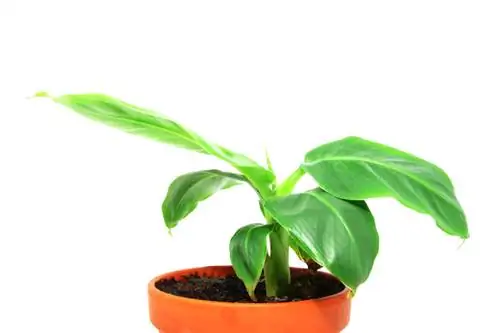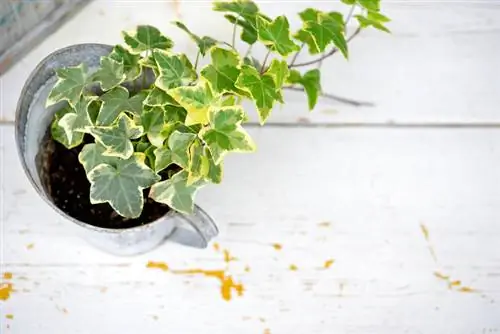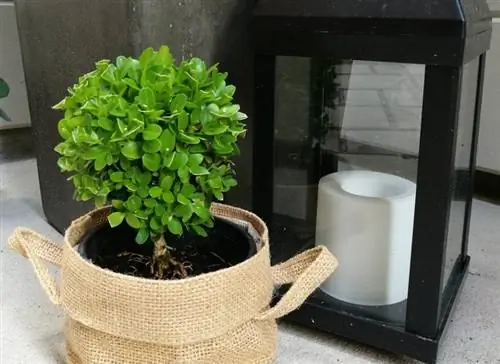- Author admin [email protected].
- Public 2023-12-16 16:46.
- Last modified 2025-01-23 11:20.
Once purchased or grown from a cutting or seed, you will want to enjoy it for many years. Although the carpenter aralia is considered robust, care work should not be neglected. Read about which ones play a role below!

How do you properly care for an indoor aralia?
To care for the indoor aralia, you should water it regularly with low-lime water, fertilize it between March and September, occasionally clean the foliage and repot it in spring. Pruning is optional, but helps promote bushy growth.
How do you know when an indoor aralia needs to be watered?
The indoor aralia needs soil that is slightly moist. She doesn't like wetness and she doesn't like dryness either. Therefore, water them regularly and use low-lime water. You can always water when the top layer of soil has dried out.
How much fertilizer does the indoor aralia need?
Ideally, the indoor aralia is supplied with fertilizer such as liquid fertilizer (€6.00 on Amazon), stick fertilizer or coffee grounds between March and September. While fertilizing every 3 to 4 weeks is appropriate in spring, fertilizing should be done every 2 weeks in summer. In winter, fertilization is completely avoided because the plant is dormant at this time.
Does this houseplant need pruning?
This is what you need to keep in mind when cutting:
- young specimens tolerate cutting better than older ones
- Cutting is not absolutely necessary
- cut off old, dried out and diseased parts
- promote bushy growth through strong pruning
- remove old flowers
- cut off just above one eye
- ideal cutting time: October or February
How to care for the leaves of this plant?
The foliage of the carpenter aril usually has a leathery shine. But over time it quickly becomes dusty. Therefore, you should occasionally wipe the individual leaves with a damp cloth or rag.
When do you repot the indoor aralia?
In the spring, just before the vegetation really sets in, is the right time to repot. Choose a slightly larger pot, replace the old soil and cut away dried and rotten roots before replanting!
What pests can attack them?
Although the aralia is poisonous, this fact does not stop pests from feeding on the cell sap in its leaves. The following pests can attack them:
- Spider mites
- Red Spiders
- Aphids
- Thrips
Tip
In winter, place the indoor aralia in a 12 to 16 °C cool and bright room, such as the bedroom. Stop adding fertilizer and water more sparingly during the winter!






